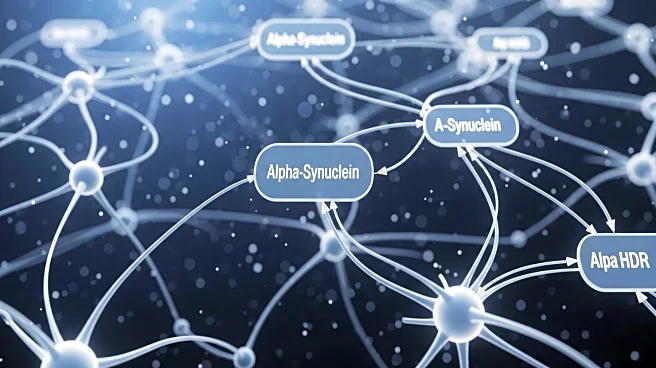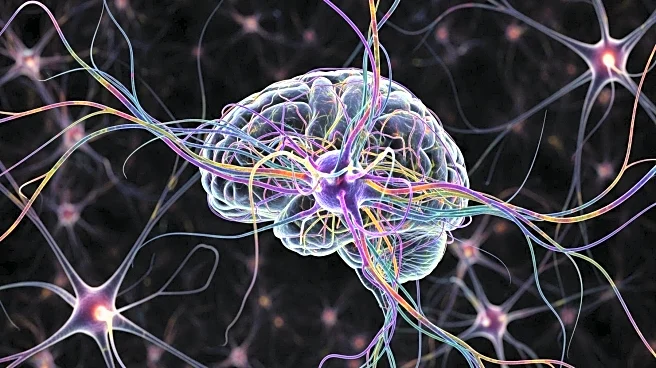What's Happening?
Researchers at Aarhus University have discovered that alpha-synuclein oligomers, associated with Parkinson's disease, can form pores in cell membranes, potentially leading to chemical imbalances in the brain. This study, published in ACS Nano, observed a three-step process where oligomers attach, partially insert, and form dynamic pores in cell membranes. These pores allow molecules to leak, which may contribute to the progression of Parkinson's disease. The research provides new insights into the mechanisms of Parkinson's, suggesting that the dynamic behavior of these pores might explain why affected cells do not die immediately. The study also highlights the preference of oligomers for curved membranes, such as those found in mitochondria, which could be crucial in understanding and countering the disease.
Why It's Important?
This research offers a deeper understanding of Parkinson's disease, a complex neurodegenerative disorder affecting millions worldwide. By identifying how alpha-synuclein oligomers damage brain cells, the study opens new avenues for potential treatments and preventive strategies. Understanding the dynamic nature of pore formation could lead to innovative approaches to mitigate the effects of Parkinson's. The findings also emphasize the importance of studying protein behavior in disease progression, which could have broader implications for other neurodegenerative disorders.
What's Next?
The researchers plan to verify their findings with living neurons to better understand the real-world implications of their study. They are also exploring nanobodies that can identify oligomers, although these do not yet prevent pore formation. Future research will focus on applying these findings to more complex biological systems, potentially leading to new therapeutic strategies for Parkinson's disease.











